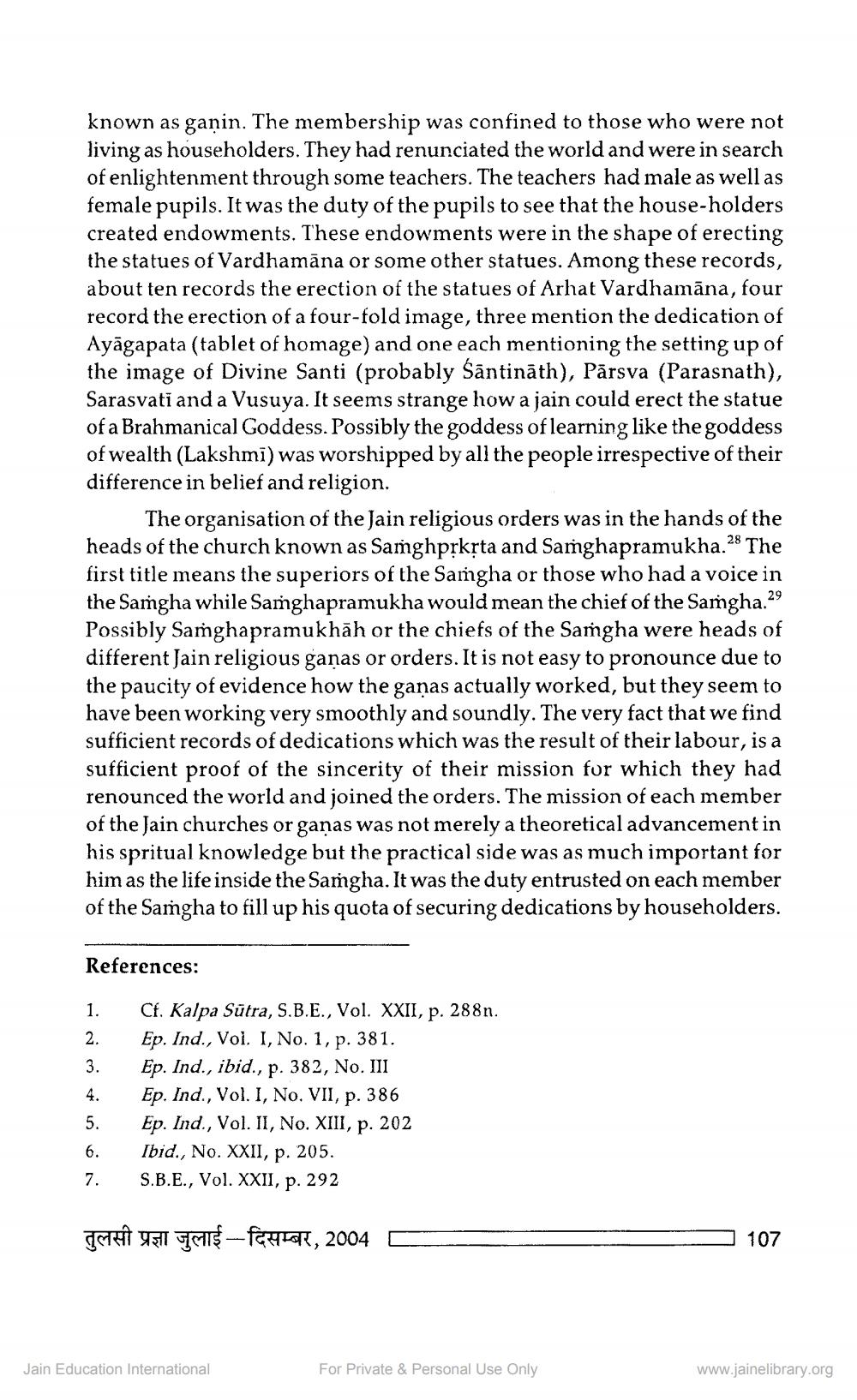________________
known as ganin. The membership was confined to those who were not living as householders. They had renunciated the world and were in search of enlightenment through some teachers. The teachers had male as well as female pupils. It was the duty of the pupils to see that the house-holders created endowments. These endowments were in the shape of erecting the statues of Vardhamāna or some other statues. Among these records, about ten records the erection of the statues of Arhat Vardhamāna, four record the erection of a four-fold image, three mention the dedication of Ayāgapata (tablet of homage) and one each mentioning the setting up of the image of Divine Santi (probably Santināth), Pārsva (Parasnath), Sarasvati and a Vusuya. It seems strange how a jain could erect the statue of a Brahmanical Goddess. Possibly the goddess of learning like the goddess of wealth (Lakshmi) was worshipped by all the people irrespective of their difference in belief and religion
The organisation of the Jain religious orders was in the hands of the heads of the church known as Samghprksta and Samghapramukha.28 The first title means the superiors of the Samgha or those who had a voice in the Samgha while Saṁghapramukha would mean the chief of the Samgha.29 Possibly Saṁghapramukhāh or the chiefs of the Samgha were heads of different Jain religious ganas or orders. It is not easy to pronounce due to the paucity of evidence how the ganas actually worked, but they seem to have been working very smoothly and soundly. The very fact that we find sufficient records of dedications which was the result of their labour, is a sufficient proof of the sincerity of their mission for which they had renounced the world and joined the orders. The mission of each member of the Jain churches or ganas was not merely a theoretical advancement in his spritual knowledge but the practical side was as much important for him as the life inside the Samgha. It was the duty entrusted on each member of the Samgha to fill up his quota of securing dedications by householders.
References: 1. Cf. Kalpa Sūtra, S.B.E., Vol. XXII, p. 288n.
Ep. Ind., Vol. I, No. 1, p. 381. Ep. Ind., ibid., p. 382, No. III Ep. Ind., Vol. I, No. VII, p. 386 Ep. Ind., Vol. II, No. XIII, p. 202
Ibid., No. XXII, p. 205. 7. S.B.E., Vol. XXII, p. 292
A
El quis-faqtok, 2004
C
107
Jain Education International
For Private & Personal Use Only
www.jainelibrary.org




